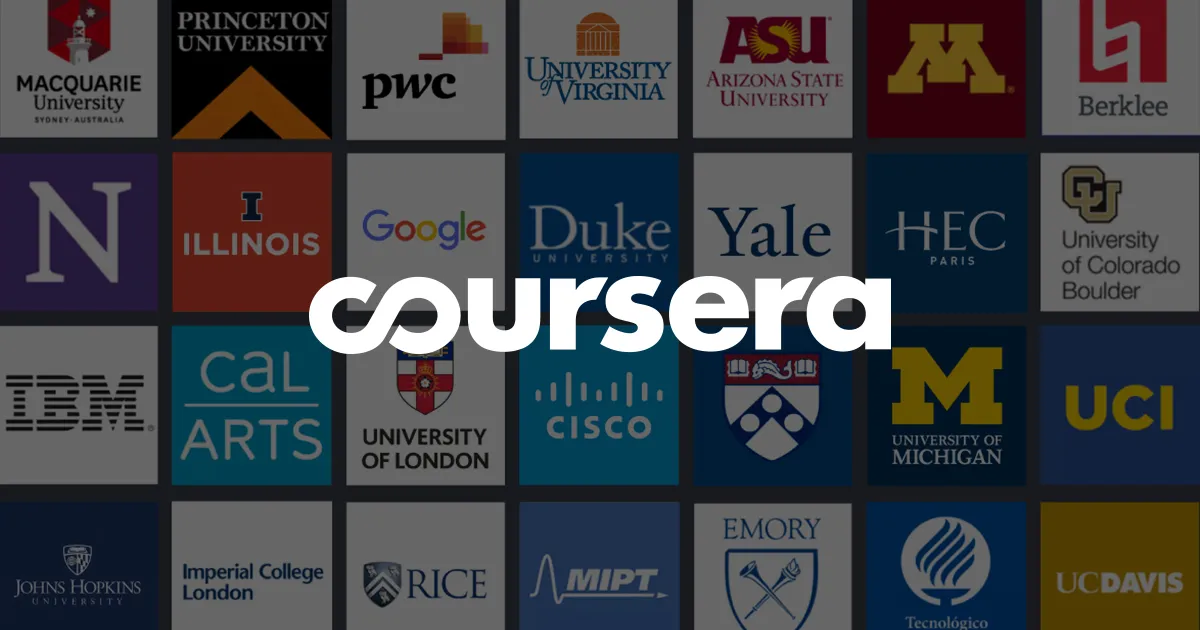
First Steps in Linear Algebra for Machine Learning 
This course from National Research University Higher School of Economics provides an introduction to linear algebra for machine learning, covering topics such as vectors, matrices, and linear transformations. ▼
ADVERTISEMENT
Course Feature
![]() Cost:
Cost:
Free
![]() Provider:
Provider:
Coursera
![]() Certificate:
Certificate:
No Information
![]() Language:
Language:
English
![]() Start Date:
Start Date:
Self Paced
Course Overview
❗The content presented here is sourced directly from Coursera platform. For comprehensive course details, including enrollment information, simply click on the 'Go to class' link on our website.
Updated in [March 06th, 2023]
This course provides a comprehensive introduction to Linear Algebra for Machine Learning. Learners will gain a solid understanding of the fundamentals of linear algebra, including course overview, why to learn, development paths, related learning suggestions, and more. They will learn about matrices and multidimensional vectors, matrix arithmetics, properties of matrix operations and some special matrices, vectors and matrices in Python, systems of linear equations, matrix inverse, Gaussian elimination, elementary row operations, LU and PLU decomposition. Through this course, learners will gain the knowledge and skills necessary to apply linear algebra to machine learning and data science.
[Applications]
After this course, students can apply the concepts learned to solve linear equations, calculate matrix inverses, and decompose matrices into LU and PLU forms. They can also use Python to create and manipulate vectors and matrices. Additionally, they can use the Gaussian elimination algorithm to solve systems of linear equations.
[Career Paths]
1. Data Scientist: Data Scientists use linear algebra to analyze large datasets and uncover patterns and trends. They use linear algebra to develop predictive models and algorithms to help businesses make better decisions. They also use linear algebra to develop machine learning models and algorithms. As data science continues to grow, the demand for data scientists with a strong understanding of linear algebra will continue to increase.
2. Machine Learning Engineer: Machine Learning Engineers use linear algebra to develop and optimize machine learning models. They use linear algebra to develop algorithms that can learn from data and make predictions. They also use linear algebra to optimize the performance of machine learning models. As machine learning continues to grow, the demand for machine learning engineers with a strong understanding of linear algebra will continue to increase.
3. Artificial Intelligence Engineer: Artificial Intelligence Engineers use linear algebra to develop and optimize artificial intelligence algorithms. They use linear algebra to develop algorithms that can learn from data and make decisions. They also use linear algebra to optimize the performance of artificial intelligence algorithms. As artificial intelligence continues to grow, the demand for AI engineers with a strong understanding of linear algebra will continue to increase.
4. Software Developer: Software Developers use linear algebra to develop software applications. They use linear algebra to develop algorithms that can process data and make decisions. They also use linear algebra to optimize the performance of software applications. As software development continues to grow, the demand for software developers with a strong understanding of linear algebra will continue to increase.
[Education Paths]
1. Bachelor of Science in Mathematics: This degree program provides students with a comprehensive understanding of mathematics, including linear algebra, calculus, and other related topics. Students will learn how to apply mathematical principles to solve real-world problems. Developing trends in this field include the use of machine learning and artificial intelligence to solve complex problems.
2. Master of Science in Computer Science: This degree program focuses on the development of computer algorithms and software applications. Students will learn how to use linear algebra and calculus to create efficient algorithms and software applications. Developing trends in this field include the use of machine learning and artificial intelligence to create more efficient algorithms and software applications.
3. Master of Science in Data Science: This degree program focuses on the analysis of large datasets. Students will learn how to use linear algebra and calculus to analyze and interpret data. Developing trends in this field include the use of machine learning and artificial intelligence to create more efficient algorithms and software applications for data analysis.
4. Doctor of Philosophy in Applied Mathematics: This degree program focuses on the application of mathematics to solve real-world problems. Students will learn how to use linear algebra and calculus to create efficient algorithms and software applications. Developing trends in this field include the use of machine learning and artificial intelligence to create more efficient algorithms and software applications for data analysis and problem solving.
Course Syllabus
Abstract algebra and linear algebra
Axioms of vector spaces: first application
Examples of vector spaces
Subspaces
Linear combinations and spans
Basis and linear dependence
Dimension of a vector space
Examples of bases
Linear dependence and rank
Formula for the solution of a SLAE
An example of vector representation of the set of solutions
Rouché–Capelli Theorem
Full rank decomposition
Course Provider

Provider Coursera's Stats at AZClass
Discussion and Reviews
0.0 (Based on 0 reviews)
Explore Similar Online Courses

Foundations for Mastering Watercolor Painting

Psychology of Learning - Online Introductory Course - FutureLearn

Python for Informatics: Exploring Information

Social Network Analysis

Introduction to Systematic Review and Meta-Analysis

The Analytics Edge

DCO042 - Python For Informatics

Causal Diagrams: Draw Your Assumptions Before Your Conclusions

Whole genome sequencing of bacterial genomes - tools and applications

Linear Algebra: Help & Tutorials

Eigenvectors and Eigenvalues

Linear Algebra Refresher Course
 Related Categories
Related Categories
Quiz
 Submitted Sucessfully
Submitted Sucessfully
1. What is the main theorem of Gaussian elimination?
2. What is the first step in Linear Algebra for Machine Learning?
3. What is the last step in Linear Algebra for Machine Learning?


Start your review of First Steps in Linear Algebra for Machine Learning